FILTRATION DESIGNED
FOR YOUR PROCESS
One of our knowledgeable staff members will provide the information you need. We look forward to working with you!
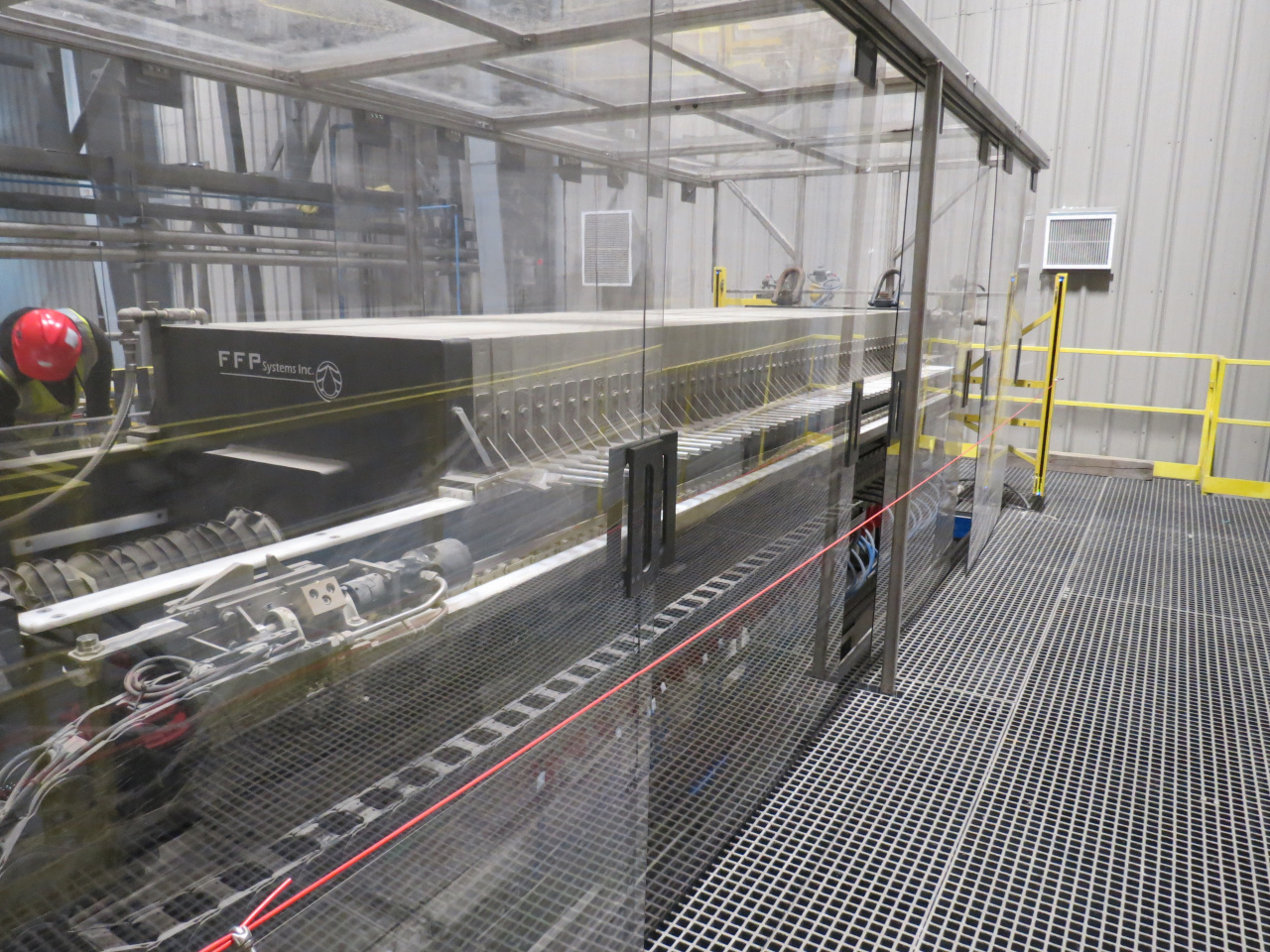
Filter Presses
![]()
Slurry Dewatering System
Find out more about filter press and slurry dewatering system here at FFP Systems Inc. We are a company in Mississauga, ON that provides an extensive selection of industrial filtering systems. Continue reading through our website to learn more about the filter press feed cycle and its important phases.
- Brine Sludge
- Metal Hydroxide Sludge
- Oily Sludge
- Secondary Biological Sludge
- Water Treatment Alum Sludge
The filter press fundamentally comprises various chamber filter plates (also referred to as recessed filter plate pack) mounted vertically on and between two sidebars or suspended from an overhead support shaft. The support beams or sidebars are linked toward one side to a fixed head, otherwise called a feed head, and at the opposite end to an end head. Through a closing arrangement on the end head, generally a hydraulic slam, the recessed filter plate pack is compacted firmly together between the fixed feed head and a third head known as the moving head. This forms a compact filtering unit utilizing recessed chamber filter plates or flush plates and frames.
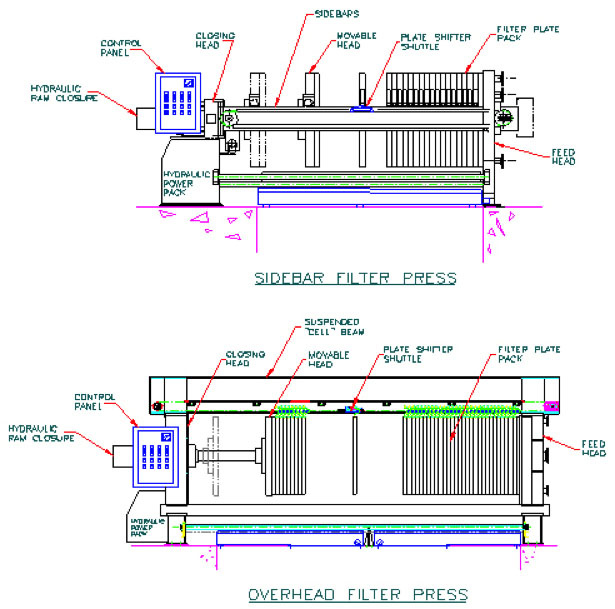
Filter Press Feed Cycle
Stage 1
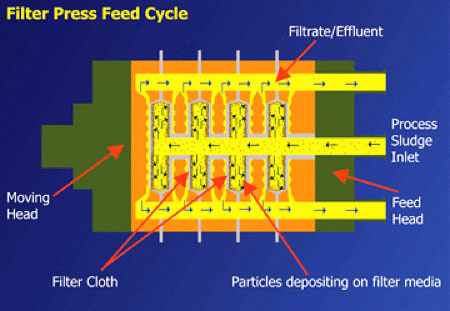 Figure 1 | 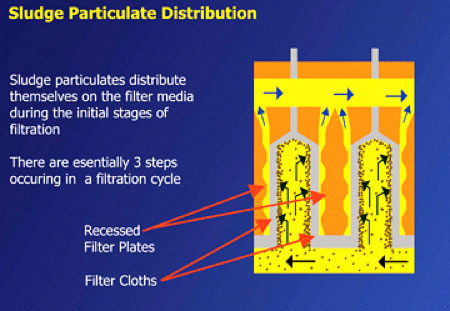 Figure 2 | 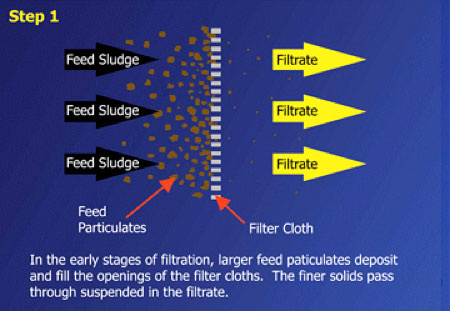 Figure 3 |
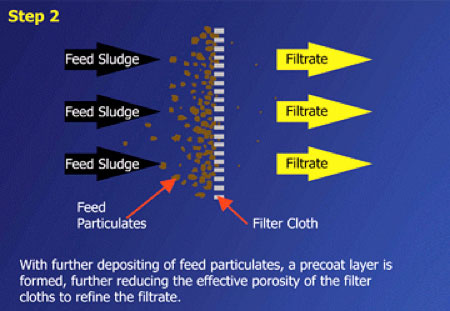 Figure 4 | 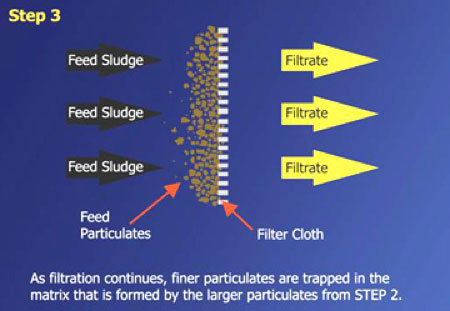 Figure 5 | 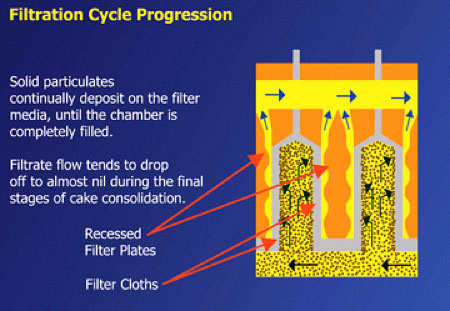 Figure 6 |
Final Cake Consolidation
Extra solids are being pumped into the filter chamber during the consolidation step. The result of this is a dryer, firmer and denser filter cake. This cycle typically proceeds until the liquid flow has been reduced to virtually nil. Now, the feed pump is stopped and the internal pressure inside the plate is relieved.
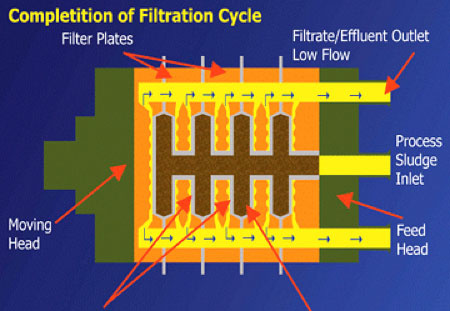
Before releasing the filter cake, the cake might be further washed in place for impurity extraction or neutralization purposes and/or the cake might be blown with air to remove free moisture and to dry the filter cake (see Section 9 for further explanation).
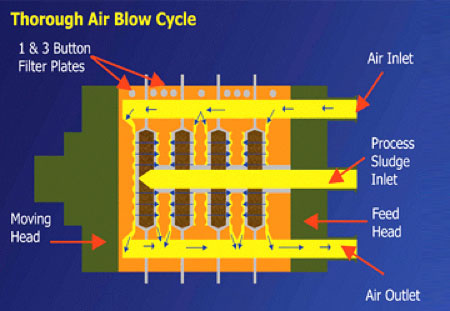
The hydraulic closure system is actuated to withdraw the moving head to its completely open position once the pressured is relieved inside the filter plate pack. When open, every filter plate is isolated from its neighbor to permit the filter cake to fall freely from between the isolated chambers. The plates might be moved manually or by a semi or completely motorized equipment depending on the size of the press.
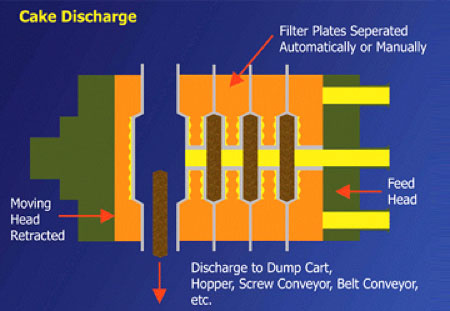
- High Pressure (For Example 225 PSI or 16 Bar)
- Low Pressure (For Example 100 PSI or 7 Bar)
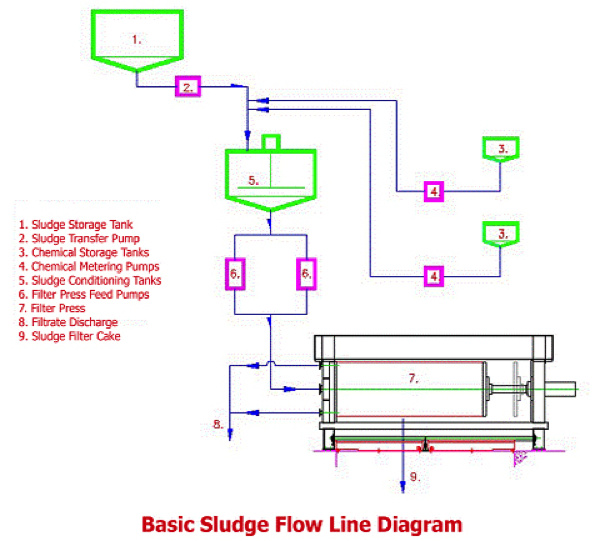
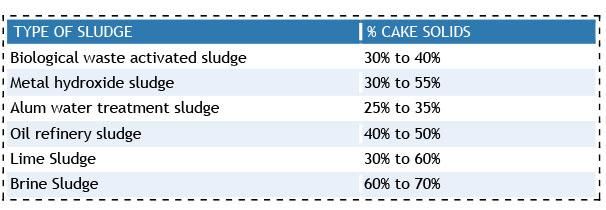
Filter Cloths
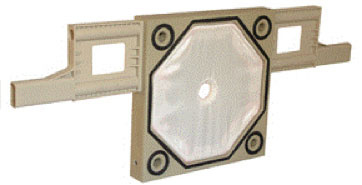 Figure 11 | 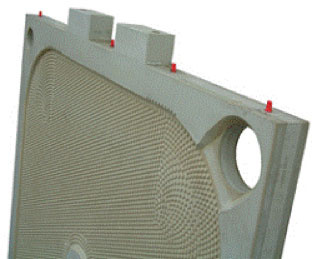 Figure 12 |
Conditioning Agents
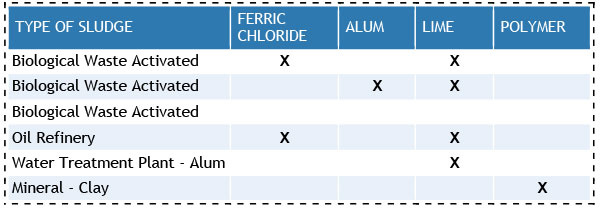
- Conditioning agents can be added immediately to the sludge-conditioning tank.
- Properly controlled polymer can be included at the suction side of the filter press feed pump. This strategy is also an effective technique of introducing the treatment chemical in the "inline" prior the filter press.
- The preferred technique includes introducing the conditioning agent directly into the line and mixed with the sludge by a static inline mixer prior to the conditioning tank.
- Ram or Piston Pumps, Usually Hydraulically Driven
- Double Diaphragm Pumps, Air Driven
- Piston Membrane Pumps
- Progressive Cavity Pumps With Speed Control
- Cakes Discharge Into Trucks
- Cakes Discharged Into Conveyors (Screw, Belt, or Drag Chain) Under the Press For Transportation Elsewhere
- Cakes Discharged Into Dumper Boxes (i.e. Dumpster Type for Truck Pick Up)
- Simple to operate and maintain. Very few moving parts. Filter elements and media are easily accessible.
- No unfiltered heel at end of cycle. No fluid to reprocess. All heel is blown forward as filtrate. No danger of dropping filter cakes during heel blowback.
- Thorough cake washing or extraction can be accomplished very simply, again with no danger of cake sloughing during emptying process fluid and refilling with wash liquor.
- No pressure vessel to contend with. Recessed plates form their own pressure chamber.
- Cake can be discharged wet or dry, as desired.
- Cake may be either blown dry with air or a cake consolidation cycle can be run for maximum cake dryness.
- No exotic materials of construction. In most standard filter presses, all wetted parts are polypropylene. For high temperature applications 90 degrees C (194 °F) and above, FRP and metallic plates can be provided.
- No danger of damaging presses due to “bridging” of plates.
- The entire operation may be fully automated.
- Very cost-competitive compared to tank type pressure leaf, pressure tube or vacuum filters.
Typical Polishing Applications
- Carbon Removal From Corn Syrups
- Edible Oils (for Bleaching Clay or Nickel Catalyst Recovery)
- Evaporated 50% Caustic
- Saturated Brine for Chlor-Alkali Production
- Swarf Removal From Cutting Fluids
- Various Acids (Sulfuric, Acetic, Hydrochloric)
| Impurities can be extracted or leached from the filter cake by washing it after it has been formed. The washing medium, water or other liquor/solvent, is forced through the filter cake by pumping at a pressure marginally over the terminating filter pressure. For best washing results, the filter cake should be of uniform thickness and consistency. There are two sorts of washing techniques: simple washing and thorough washing. In simple washing, the wash liquor is introduced to the filter in the same direction as the feed, entering directly into the slurry inlet. Simple washing is usually the best strategy to practice when there is a wide range of particle size distribution or when the frame or cake chamber isn't completely filled with filter cake. In thorough washing using recessed chamber plates, the washing liquor is fed into one of the filtrate outlet connections on the filter press and goes into the drainage area behind the cloth of the washing plate. It is then forced to stream back through the filter cloth of the wash plate, through the cake and the filter cloth of the adjacent non-wash plate and afterward discharges from the non-wash plate (Refer to figure 13). | 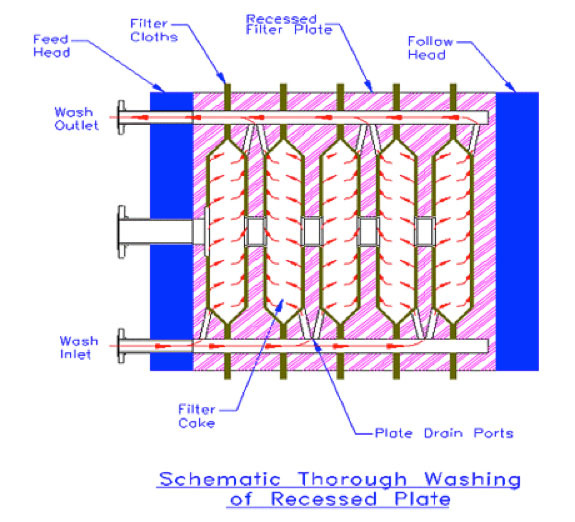 Figure 13 |
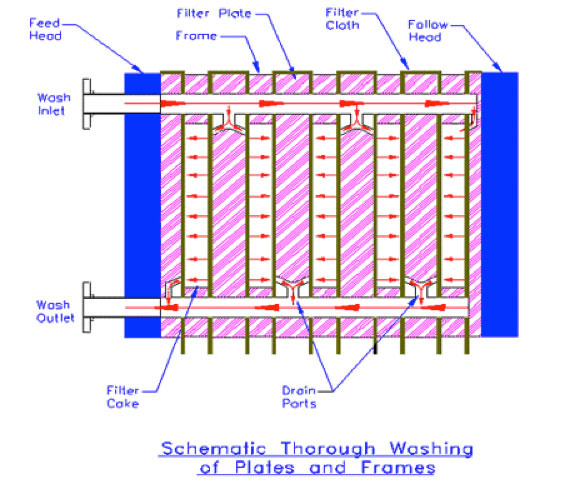 Figure 14 | A filter using flush plates and frames set up for thorough washing has separate slurry feed and wash feed ports, and either the same or separated discharge ports for filtrate and wash liquor outlet. During thorough washing, the slurry feed inlet and wash plate outlets are closed, thus forcing the wash liquor to enter the washing plates to stream back through the filter cloth, through the cake, through the cloth of the adjacent non-washing plate, and discharge from the outlet of this plate (Refer to figure 14). |
Partner With Us for Dewatering Tools
Determine the right filter press for your dewatering needs. Give us a call for detailed information about the products we offer. We hope to hear from you soon!
FFP Systems Inc.
Hours of Operation:
Service Areas:
We provide our services to clients globally.

 905-270-9872
905-270-9872